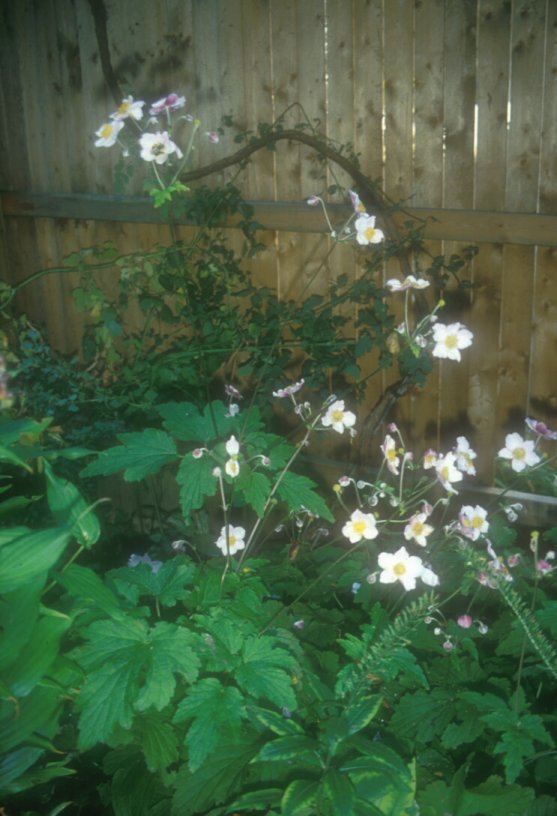| Botanical Name: Anemone tomentosa 'Robustissima' | |
| Common Name: Grape-leaf Anemone |

-
Anatomy
-
Culture
-
Design
Plant Type
Perennial
Height Range
1-3'
Flower Color
Pink
Flower Season
Summer, Fall
Leaf Color
Green, Grey Green
Bark Color
n/a
Fruit Color
n/a
Fruit Season
n/a
Sun
Full, Half, Shade
Water
Medium, High
Growth Rate
Moderate
Soil Type
Loam
Soil Condition
Average, Rich, Well-drained, Moist, Dry
Soil pH
Neutral, Basic
Adverse Factors
n/a
Design Styles
English Cottage, Formal, Japanese, Meadow, Woodland
Accenting Features
Showy Flowers
Seasonal Interest
Summer, Fall
Location Uses
Entry, Perennial Border, Shrub Border, Foundation, Patio, Raised Planter
Special Uses
Cut Flowers, Small Spaces
Attracts Wildlife
Butterflies
Information by: Stephanie Duer
Photographer:
Photographer:
-
Description
-
Notes
A lovely plant for a medium to dry shade area, Grape-leaf Anemone has soft pink, single cup-shaped flowers that float above attractive deep green foliage. Foliage is a soft green to grey-green and deeply lobed. The most adaptable of the Japanese Anemone. From late summer to fall, there is no flower quite like it in the border for providing late season color. Attracts butterflies, but not deer and rabbit. A lovely cut flower. Use in a part-shady perennial, shrub, or foundation border. Grows about 24 to 36 inches tall and wide.
Grow in well drained, loamy soil in part shade to full sun (though it will require less water in part shade). It is tolerant of heavy clay soils. It will grow in moist soils, but be longer lived in moderate to dry sites. The hardiest to zone 4 and the most tolerant of sun and drier conditions. Cut back in late winter/early spring. Syn. with A. vitifolia.